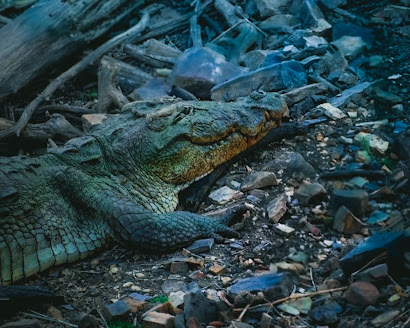LAND OF TIGERS | RANTHAMBORE NATIONAL PARK
RANTHAMBORE NATIONAL PARK
Ranthambore National Park is a vast wildlife reserve near the town of Sawai Madhopur in Rajasthan, northern India. It is a former royal hunting ground and home to tigers, leopards and marsh crocodiles. Its landmarks include the imposing 10th-century Ranthambore Fort, on a hilltop, and the Ganesh Mandir temple.
- TIGERS

In Ranthambore, almost every tiger has a special reputation and legend that precedes their lineages. Interestingly, every tiger-lover thronging to Ranthambore National Park has a happy tiger story to take home.
Machali, aka T-16, will always be remembered as perhaps the most famous tigress in Ranthambore, who loved to pose for the tourists and observers. Her soaring popularity among tourists & wildlife enthusiasts saw her featured in a movie, “The World’s Most Famous Tiger”, which even won a National Award. She even found a mention in the book, “Three Ways to Disappear”, by Katy Yocom. Unfortunately, Tigress Machali, the most photographed tigress in the world, died on 18th August, 2016. She was 20 years old.
Sundari, also known as T-17, the daughter of Machali, was another famous tigress of Ranthambore National Park. However, she passed away in October 2006. Her daughter, the Tigress T-73, gave birth to 3 cubs in 2019. Born in 2012, she is known for her shy nature & is mostly spotted in an area of the park known as Kachida Valley.
Similarly, the tourists are equally attracted to the yearning lover called Romeo (T-6), who tries hard to catch the attention of her younger companion, Laila, (T-41) who in turn, attracts her regular mates and flirts with others; that really sounds interesting.
Laila, the tigress known as T-41, charms tourists with her dalliance with T-6, famously known as Romeo. Laila can mostly be spotted in Zones 4 & 5, and is identified by the diamond symbol in her body.
The names of the Royal Bengal Tigers in Ranthambore are as interesting and diverse as their stories. One of them, T-25, known as Dollar, was named so because of a dollar like symbol on his stomach. He was also called Zalim (cruel) because he wasn’t particularly fond of humans and was known to chase vehicles carrying tourists. Despite his nickname and stories about his terror, he surprised everybody by rearing 2 orphaned tiger cubs. He died in January 2020, reportedly because of territorial fighting, according to wildlife officials.
Some of the other famous tigers of Ranthambore National Park are T-24 (Ustad), T-39 (Mala), T-41 (Junglee), Bina One, Bina Two & T-28 (Sitara).
- CHITAL
 The Chital are also known as spotted deer because of the spots found on its skin. Its coat is bright rufous-fawn profusely spotted with white. They are usually seen in herds of ten to thirty, which may contain two or three stags. They feed till late in the morning and again in the afternoon. In Ranthambhore they number more than 10000 and are critical prey species for the tiger
The Chital are also known as spotted deer because of the spots found on its skin. Its coat is bright rufous-fawn profusely spotted with white. They are usually seen in herds of ten to thirty, which may contain two or three stags. They feed till late in the morning and again in the afternoon. In Ranthambhore they number more than 10000 and are critical prey species for the tiger - COMMON LANGUR

Also known as hanuman monkey, it is a long limbed, long tailed, black faced monkeys, seen as about towns and villages as in forests in India. Langurs are pure vegetarians. They eat wild fruits, flowers, buds, shoots and leaves. They occasional pillage gardens and cultivation, but are not such habitual raiders. The inveterate enemy of langur is the leopard but on the ground they are also attacked by tigers - CROCODILE

The shape of the body follows the generalized reptilian pattern of long body with short limbs. The skin of the back and tail is armoured with bony plates. Crocodilians teeth are shed and replaced every year. Their sense of sight, smell and hearing are well developed. It inhabits rivers, lakes and other large water bodies in the plains and up to 600m in the hills throughout the Indian subcontinent. It is an excellent swimmer. On land, it rests on its belly, but walks and runs with the body well off the ground. It hunts more or less exclusively in water. - NILGAI

The Nilgai is th largest antilope found in India. It is also known as blue bull because when sunlight falls on the grey coat of male nilgai it gives it a tinge of blue color. It is a great ungainly animal, somewhat horse like in build, with high withers and a low rump. They feed till late in the morning and then again early in the evening. They have the habit of resoting to the same spot to deposit their droppings, forming in this way considerable accumulations. They are found in lesser numbers than sambar or chital in Ranthambhore and frequent the open grassy examples.
GALLERY
Blogs by Kartikeya Srivastava









🤩🤩
ReplyDelete:*
DeleteWonderful clicks!
ReplyDelete:*
Deleteloved it
ReplyDeleteThankyou❤
Deletebeautiful clicks
ReplyDeleteThanks
Deleteland of tigers.
ReplyDeleteYes
Deletebeautiful captures.
ReplyDeleteThanks
Deletetigers
ReplyDelete🐾🐾
Deletehello
ReplyDeletenice..
DeleteThankyou
DeleteAmazing🤩🤩
ReplyDeleteThankyou❤
DeleteStunning and wonderful ❣️
ReplyDelete